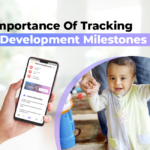Breastfeeding is a memorable and special moment due to many reasons, some of which include the following,
- Ideal nutrition for your baby until he starts solids
- Cost-effective
- Special bonding moment with your baby
- Health benefits for baby and mother.
While many mothers prefer to bottle-feed their baby for medical or personal reasons, breastfeeding is ideally advised, since it gives a healthy start to your little munchkin’s life on earth. The American Academy of Pediatrics (AAP) recommends breastfeeding at least until your baby reaches his/her first birthday.
However, breastfeeding moms make it look so easy. At the snap of the fingers, they open a few buttons and latch on to the baby well. Is breastfeeding easy and natural? Certainly, it is natural but not too easy. It is particularly bit taxing for new moms and babies.
Don’t fret we have compiled some good tips that can help you have smooth breastfeeding sessions with your little one.
- Breastfeed soon after the birth. This will help in more milk generation to keep your baby satisfied and full.
- After delivery, try to talk to a lactation consultant. They can help you better with expert breastfeeding tips to latch the baby better.
- Breastfeeding sessions should typically last between 20-30 minutes. This can vary between babies and their moods.
- After each feeding session, your one breast should be fully drained. You should also ensure that your baby drinks from both breasts during each breastfeeding session.
- Do not force your baby to drink the second breast if they are satisfied with the first breast. Instead, you can start with the fuller breast in the next session.
- For breastfeeding success, you need to try the tactic of feeding on demand rather than following a strict schedule.
- During the first few days, do not expect babies to show much of a demand. In such cases, you need to ensure that the newborn baby is fed every two hours without fail.
- The ideal feeding schedule for a newborn should be between 8-12 sessions per day. The two-hour feed rule should be promptly followed during the night as well.
- How can you know if your baby is hungry? Here are some simple signs that can signal that your baby is in need of breastmilk.
- Opening and closing mouth
- Yawning
- Sucking furiously on baby fists, your hand or dress
- Sucking on tongue or lip
- Nuzzling on your breasts
- Doing lip-smacking sounds
- Persistent crying
- How to tell if your baby is getting enough milk? Here are some simple signs to know if your baby is eating enough.
- The number of dirty diapers: After the initial few days, your baby should have 3-4 bowel movements and 6-12 urine discharges within 24 hours. The diaper output is an excellent metric to evaluate whether your baby is getting enough milk per session.
- The mood of the baby: If your little one is happy and content after each feeding session, then chances are that he/she is getting enough milk. If she/he is fussy and crying, then the baby is still hungry. However, fussiness and crankiness can be due to colic or gas also.
- The weight gain of the baby: Ideally, infants are expected to gain weight from the second week. You can take a note of the weight every week to check whether your infant is getting enough milk per feed.
Hope we have covered the basics of breastfeeding. If you are looking for more baby care tips, then download our KidsCur App now.



